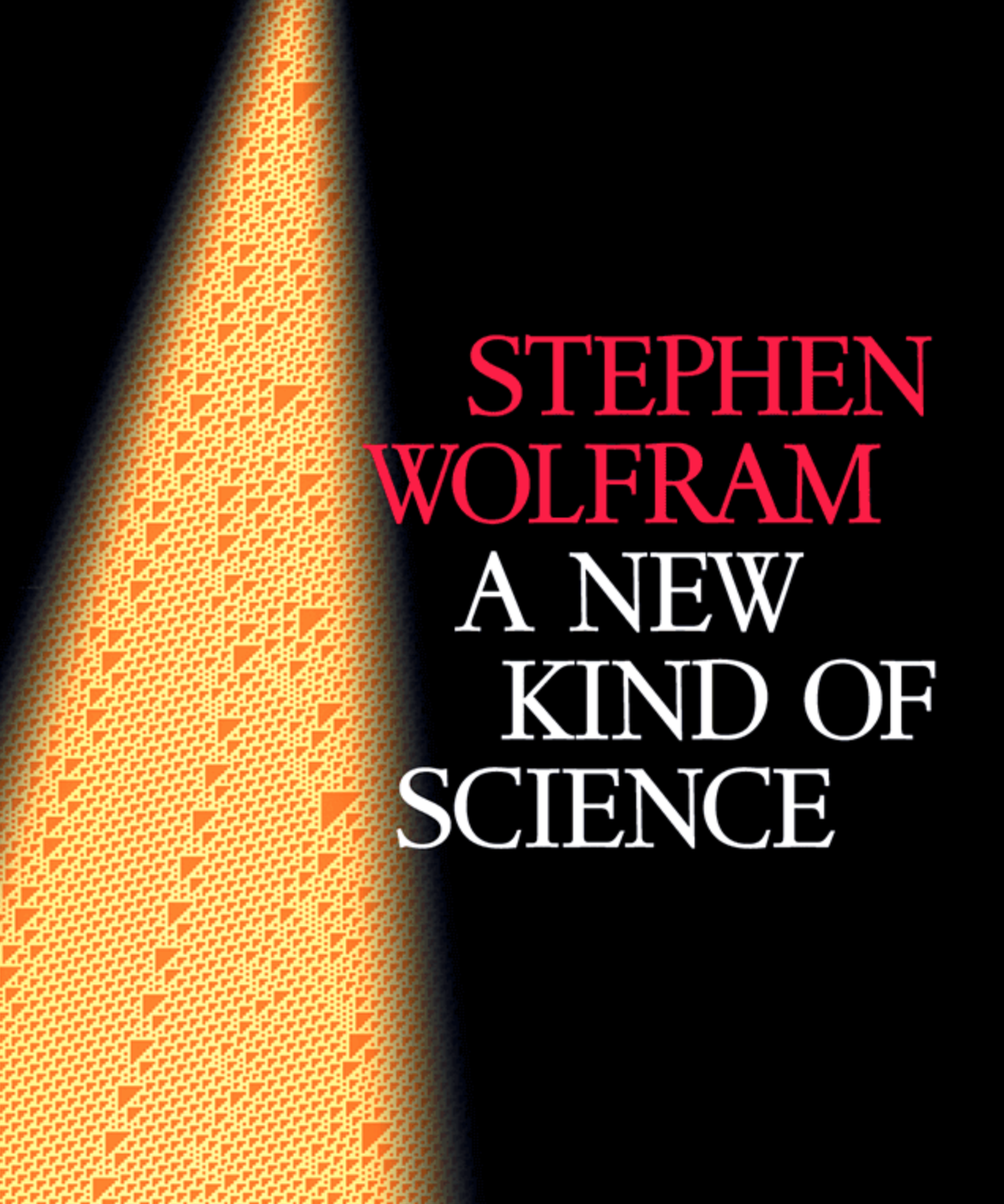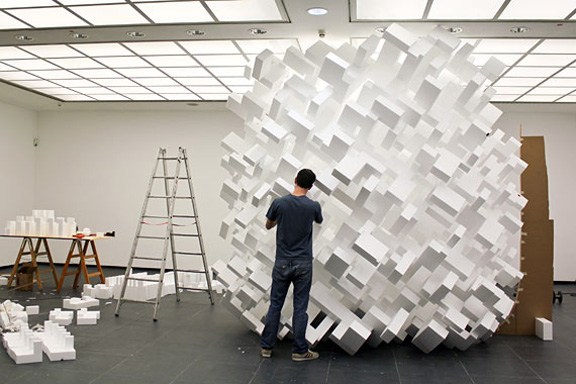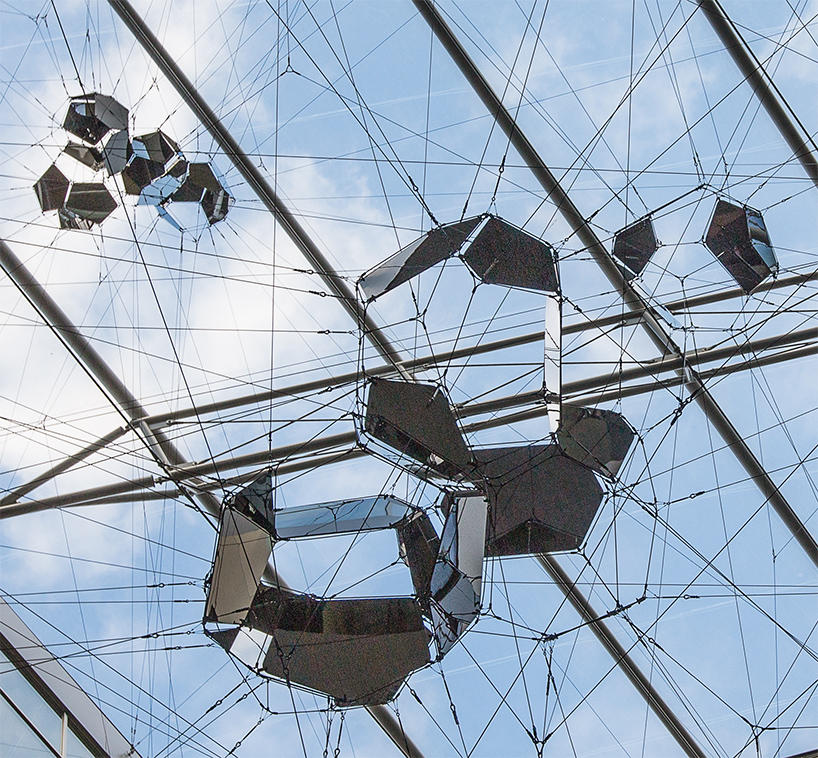
https://www.wolframscience.com/nks/
Studio 9: Architectural Notations
KTH Royal Institute of Technology Architecture School

https://www.wolframscience.com/nks/
Texas gets ready to assemble his 2000 modules for the first project assignment



John Powers, God’s Comic
Power’s forms are constructed out of a limited formal vocabulary: Polystyrene blocks cut to a selection of preset sizes, attached to each other at 90 degree angles. The resulting structure gives the appearance of being a computer-aided design but is in reality the outcome of a human-executed algorithm, dictated by the artist’s intuition expressed through the repetitive action of connecting blocks.

http://www.creativejournal.com/posts/235-john-powers-god-s-comic
Great pinup today – make sure to post your work on the blog and get the sharing going! We will have our next GH tutorial at 9am on thursday.
Some specific references you might find helpful:
Viktoria: Sierpinski triangle, also check out fraktalfabriken and polygo (could make your own for more quick fabrications), Fractal Cult Project, L-systems
Erik: L-systems/perlin noise
James – paper on the British Museum, Daniel Piker’s blog on Rheotomic Surfaces
Siyana – Felix Candela, Kenzo Tange
Philip – Archidose rose window drawings
Olga – Sean Ahlquist
Sandra – fibonacci and golden ratio grasshopper componets
Adah – Folding techniques for designers, Ron Resch, Robert Lang, A.L. Scherer thesis booklet, Ori Revo, Tomohiro Tachi
Wasp is a set of Grasshopper components, developed in Python, directed at representing and designing with discrete elements. The description of each individual part includes basic information necessary for the aggregation process (part geometry, connections location and orientation). The set of connections define the topological graph of the part, which is then used to define the possibilities of aggregation with other parts.
The core of the framework relies on a set of aggregation procedures, allowing generation of specific structures from the combination of different modules. Each of these procedures is composed of strategies for the selection of basic aggregation rules, described as an instruction to orient one module over a selected connection of another module. Currently available procedures include stochastic aggregation and field-driven aggregation.
Download: http://www.food4rhino.com/app/wasp
Significant parts of Wasp have been developed by Andrea Rossi as part of research on digital materials and discrete design at DDU Digital Design Unit – Prof. Oliver Tessmann – Technische Universität Darmstadt (http://www.dg.architektur.tu-darmstadt.de/dg/startseite_3/index.de.jsp)

Design Boom, Tomas Saraceno Sundail, Oslo
read full article here: https://www.designboom.com/art/tomas-saraceno-sundial-for-spatial-echoes-aker-brygge-oslo-07-22-2015/
“visitors experience constantly-changing reflections from the building that evolve both ‘sundial for spatial echoes’ and the interior space in varied shades and colorings. The work recalls forms found in chemistry, biology, physics, and cosmos, building upon the symbiotic relationship between spaces, places, objects and ideas. these aesthetic and experiential sources encapsulate the feeling of the interdependencies of the system as a whole — making small changes in one string, for example, reverberates through the entire composition of the piece.”
The Nature of the Code, Daniel Shiffman
“We want to take a look at something that naturally occurs in our physical world, then determine how we can write code to simulate that occurrence.”
